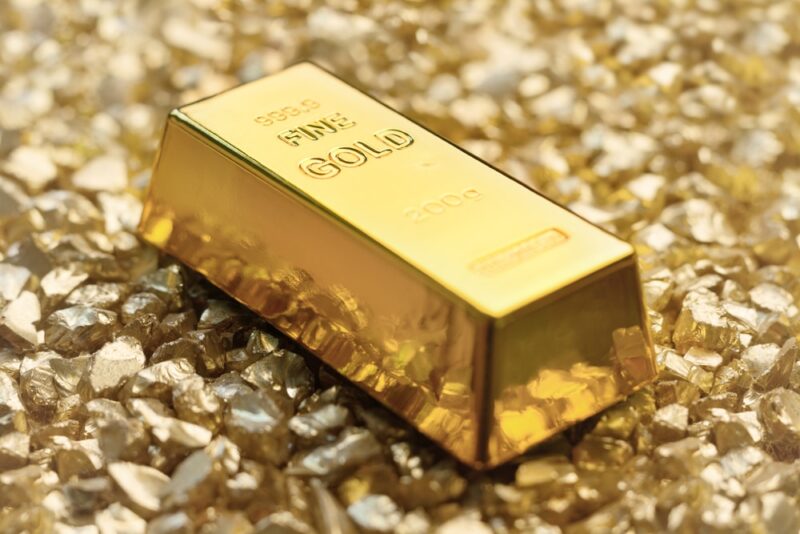What’s the Difference Between 24K and 9999 Gold?

By AAA
September 21, 2022
Everyone has heard of 24 karat (24k) gold. It’s all over gold jewelry advertisements. Even if you don’t understand what it means on a technical basis—pure gold with no other metals in the mix—it’s synonymous with “highest quality” as far as gold jewelry is concerned.
What about 9999 gold?
Most people aren’t familiar with this term as it applies to gold bullion or gold coin investing (and it goes without saying that most people don’t invest in physical bullion or coins).
Still, 9999 gold (or 999 gold) and 24k are the same thing. In the world of precious metals investing, 9999 gold is to bullion what 24k gold is to jewelry—the highest level of purity you can find.
So, what are the other levels of gold purity?
This is a good question, for the average consumer who doesn’t buy 24k gold may not be familiar with the other grades of purity. Here’s a brief description of other gold “alloys” (a combination of two or more metals).
- 23k gold has a 95.9% gold content.
- 22k gold has around 92% gold; this alloy can be found in American gold eagle coins in addition to fine jewelry.
- 21k gold contains 87.6% gold, but its occurrence is less-common; you’re likely to find this alloy in vintage gold jewelry.
- Red or rose gold is an 18k alloy that contains 75% gold and 25% copper.
- Black gold is another 18k that’s made of 75% gold and 25% cobalt.
- Green gold is a rarely-heard term that’s also known as “electrum”; its content is 73% gold and 27% silver.
- White gold is a 14k or 58.5% alloy that combines gold with nickel, palladium, or manganese.
How often have you come across terms like 21-karat, rose gold, or green gold? If you’re like most consumers, chances are that you haven’t.
Can I find gold that’s 100% pure?
The short answer is no. Mining the stuff from the ground, it’s nearly impossible to find gold that doesn’t have some microscopic trace of non-gold particles.
Still, 9999 and 24k gold constitute the highest grades for gold investment. It’s even more pure than “tradeable” or “good deliver gold” whose purity has to be at least 99.5% pure, or 995 out 1000 parts gold.
So, why not just call it one thing, either 9999 gold or 24k?
Although both terms are synonymous, there are two naming conventions that dominate the precious metals industry: the karat system and the millesimal fineness system.
A single karat is equivalent to 4.1667% (or one part out of 24). Millesimal fineness, which measures up to the thousandth unit, is a newer and more precise system for measuring purity.
But this brings up another question: what’s the purpose of alloys? The answer is that gold is often too soft for frequent use, such as coinage. Alloys make gold more durable, but they also dilute gold’s purity.
Hence, the difference between “investment gold,” which you want to store away somewhere safe, and gold for frequent use, as in the case of gold coins which have been used for centuries.
Are all bullion bars around 99.99% in purity?
Most bars produced by a reputable manufacturer will have a purity level of at least 99.5%, but not all bars meet this grade. With that said, we discourage you from purchasing any bars below 99.5% in purity.
How can you tell? Its purity and weight, along with the manufacturer’s name, should be stamped on the face of the bullion. In other words, all of this information should be transparent.
As a side note, investible gold bullion also comes in different weights, from one gram to one kilogram. Central banks typically purchase standard gold bars weighing 12.4 kilograms, or 400 troy ounces.
Are bullion bars the same as bullion coins?
Good question! No, they’re not. Bullion coins have less gold content BUT they have numismatic value—their aesthetic design, historical or symbolic qualities, and rarity (or potential rarity) may add a premium above their weight in spot gold. Bullion coins are also art pieces in addition to being monetary assets.
In contrast, bullion bars are strictly monetary assets; it’s worth having everything to do with its purity and weight.
Is it possible to spot fake 9999 gold?
Yes, there are ways to spot fake gold. First, you want to find a reputable dealer. This potentially eliminates the chances of purchasing a fake product. But if you want to double-check for yourself without having to consult a professional, here are a few things you can do:
- Weight test: Compare your bar’s weight with another of the same weight. Both weights should match precisely.
- Magnet test: If your bar attracts the magnet, then you’re dealing with a fake alloy.
- Vinegar test: Try sprinkling some white vinegar on your bar. If the exposed surface of the metal changes color, it’s fake.
- Magnifying glass test: If the bar seems excessively shiny or discolored under a microscope, it might be fake.
The bottom line
Understanding the different purity grades in gold jewelry, bars, and coins can help you make better investment decisions. Use this article as a reference. And always purchase gold products froma reputable dealer.
If you have any questions or need guidance, feel free to contact us at GSI Exchange. We’re always here to help you.

